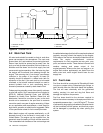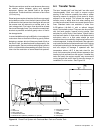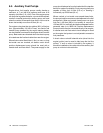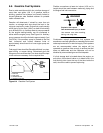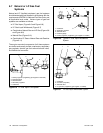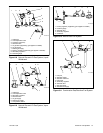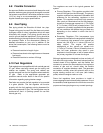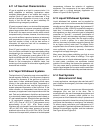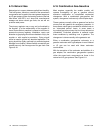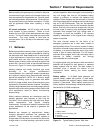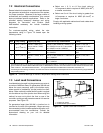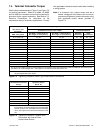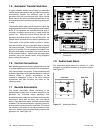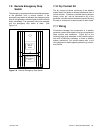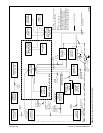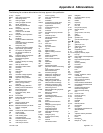TP-5700 7/9334 Section 6 Fuel Systems
6.15 Natural Gas
Natural gasis ina vapor stateas suppliedfrom theutility.
This fuel system, therefore, consists of the same basic
components and is used in the same general sequence
as LP gas systems.When the heating contentof the fuel
falls below 1000 BTU, as it does with manufactured
sewage and some natural gas fuels, the set will not
produce rated power.
The primary regulator may or may not be furnished by
the supplier. It is the responsibility of the supplier to
insure that sufficient pressure is present at all times to
operate the primary regulator. Installation, repair, and
alteration togas piping shouldbe undertakenonly bythe
supplier or with supplier’s permission. Piping should
never be used to ground any electrical apparatus. The
piping should be rigidly mounted but protected against
damage from vibration. Where flexible connections are
needed use only fuel line approved for gas fuels. See
Figure 6-10.
6.16 Combination Gas-Gasoline
Most engines, especially the smaller models, will
operate successfully on gas or gasoline without
extensive modification or complicated mechanical
changeover. With a combination gas-gasoline fuel
system, changeover involves only a few simple steps.
These systems normally utilize a gaseous fuel as the
primary fuel with gasoline for emergency operation. In
some areas natural gas is available at reduced cost on
an “interrupted service” basis. In some cases a
by-product gas is the primary fuel, but it may at times be
unavailable. Continued operation is assured under
these conditions by switching over to gasoline. The
changeover is done manually at the generator set.
Either a combination gas-gasoline carburetor or a
gasoline carburetor with a gas adapter is used. Natural
or LP gas can be used with these carburetor
combinations.
With the exception of the carburetor and addition of a
gas adapter, the combination gas-gasoline systems
utilize the same basic components as those in the
natural and LP gas systems. See Figure 6-11.



